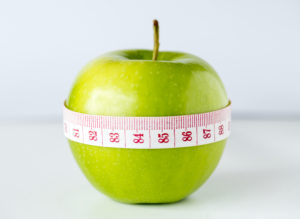by Megan Geierman, Nutrition Program Director
 While January is often known to be the “weight loss month” with many people resolving to lose weight and create a healthier lifestyle, for many others, creating a healthier lifestyle involves weight gain. In my previous position working as a clinical dietitian at the hospital, one of my responsibilities was assessing patients for malnutrition. Malnutrition risk increases with age, and with multiple co-morbidities. A recent statistic from the Academy of Nutrition and Dietetics states, “1 in 2 adults age 65 and older, and as many as 39% of older adult patients may be malnourished or at-risk. Additionally, up to 31% of malnourished patients and 38% of well-nourished patients experience nutritional decline during their hospital stay. Changes commonly associated with aging such as loss of appetite, limited ability to chew or swallow, and use of multiple medications place older adults at a higher risk for developing malnutrition.”
While January is often known to be the “weight loss month” with many people resolving to lose weight and create a healthier lifestyle, for many others, creating a healthier lifestyle involves weight gain. In my previous position working as a clinical dietitian at the hospital, one of my responsibilities was assessing patients for malnutrition. Malnutrition risk increases with age, and with multiple co-morbidities. A recent statistic from the Academy of Nutrition and Dietetics states, “1 in 2 adults age 65 and older, and as many as 39% of older adult patients may be malnourished or at-risk. Additionally, up to 31% of malnourished patients and 38% of well-nourished patients experience nutritional decline during their hospital stay. Changes commonly associated with aging such as loss of appetite, limited ability to chew or swallow, and use of multiple medications place older adults at a higher risk for developing malnutrition.”
Malnutrition Screening Tool questions are integrated into many medical assessments performed by your doctor, nurse, or dietitian. Some of the questions include the following, and help to identify individuals who are at risk or meet criteria for mild, moderate, or severe malnutrition diagnosis.
- Have you recently lost weight without trying?
- If yes, how much weight have you lost? Over what time-frame?
- Have you been eating poorly because of a decreased appetite?
Once you have been identified at risk or determined to have a diagnosis of malnutrition, your healthcare team will work with you to create an individualized care plan. Co-morbidities can range from very specific nutrition implications such as esophageal cancer, renal failure, and diabetes to a more generalized relationship. The individualized care plan needs to be created around what works best for you. Some strategies include eating small meals frequently, adding a nutrition supplement, and increasing consumption of nutritionally dense foods. As I used to say at the hospital, “We want you to get the most bang for your buck.” For instance, if you are feeling nauseous after chemotherapy and know it will be a challenge to eat more than a few bites of food that day, let’s make the most of those few bites. You will see below a recipe for energy bites, which incorporates this strategy.
For more information regarding malnutrition, or the nutrition content and quality provided in your meals from Senior Services, please contact Megan Geierman, Registered Dietitian and Nutrition Program Director, at 989-633-3791.
Sources: https://www.eatrightpro.org/news-center/in-practice/dietetics-in-action/adult-and-senior-malnutrition
http://static.abbottnutrition.com/cms-prod/malnutrition.com/img/Alliance_Malnutrition_Fact-Sheet_2014_v1.pdf
NO BAKE ENERGY BITES
Prep time: 20 MINS Cook time: 0 MINS
Total time: 20 MINS Yield: 20-25 ENERGY BITES
DESCRIPTION
This No-Bake Energy Bites recipe is easy to make, full of feel-good ingredients, and irresistibly delicious!
INGREDIENTS
- 1 cup old-fashioned oats
- 2/3 cup toasted shredded coconut (sweetened or unsweetened)
- 1/2 cup creamy peanut butter
- 1/2 cup ground flaxseed
- 1/2 cup semisweet chocolate chips (or vegan chocolate chips)
- 1/3 cup honey
- 1 tablespoon chia seeds (optional)
- 1 teaspoon vanilla extract
INSTRUCTIONS
- Stir everything together. Stir all ingredients together in a large mixing bowl until thoroughly combined.
- Chill. Cover the mixing bowl and chill in the refrigerator for 1-2 hours, or until the mixture is chilled. (This will help the mixture stick together more easily.)
- Roll into balls. Roll into mixture into 1-inch balls.
- Serve. Then enjoy immediately! Or refrigerate in a sealed container for up to 1 week, or freeze for up to 3 months.

